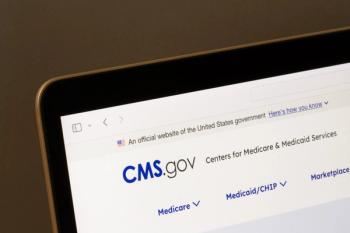
- Drug Topics October 2019
- Volume 163
- Issue 10
What Pharmacists Need to Know About the 2019-2020 Flu Season
After last year’s drawn-out flu season, the CDC weighs in on what to expect in 2019-2020
Earlier this summer, the
To that end, the CDC recently published its predictions about the upcoming season in a report entitled,
The public health agency notes that the latest trivalent, or three-component, flu vaccine will protect against three distinct strains that experts expect to be most common this year: they include the A/Brisbane/02/2018 (H1N1)pdm09-like virus, A/Kansas/14/2017 (H3N2)-like virus, and B/Colorado/06/2017-like (Victoria lineage) virus. The quadrivalent vaccine will have the addition of the B/Phuket/3073/2013-like virus of Yamagata lineage.
Are Flu Vaccines Still Worth It?
The report also provides updated dosing and age recommendations for certain vaccines like the Afluria Quadrivalent and Fluzone Quadrivalent. Aaron Glatt, MD, FACP, FIDSA, FSHEA, chair of medicine at South Nassau Communities Hospital and a spokesperson for the Infectious Disease Society of America, says he doesn’t think there were any real surprises in the report.
Trending:
“Their guidelines are very similar to what we’ve seen in previous years,” he said. “They are solid and appropriate. That said, it’s too early to tell whether the vaccine is a good match for the upcoming season. We won’t know that until we see what kind of cases are being reported and what strains are actually out there resulting in severe illness.”
That said, despite some reports of last year’s vaccine being a
“Being vaccinated helps you avoid being infected with the disease. And if you do catch the flu, it will lessen the severity of the symptoms,” he explains. “Patients should also know that last year’s vaccination, even if it wasn’t the best match, remains protective. Research shows that people who are vaccinated for the flu every year have an advantage over those who aren’t vaccinated or even have just gotten their first vaccine this year.”
He suggests that pharmacists take the time to disabuse patients of common myths regarding the flu shot.
Read More:
“One of the biggest myths people have is that they can get the flu from the flu shot. That’s just not true. It is essentially impossible to get the flu from the flu shot. If you happen to get the flu about two weeks after the flu shot, it was just a coincidence. There’s a small number of patients who might have mild discomfort after the shot but it’s nothing like getting the actual flu,” he says. “The other area where pharmacists can help promote vaccinations is by explaining that even a so-called bad match vaccination still helps to prevent serious illness.”
He adds that pharmacists who are looking to help improve vaccination numbers should look to the bigger box pharmacies like CVS and Walmart for guidance.
“They know how to do it,” he said. “They make it really easy for a person to just get the vaccine. No appointment, no waiting-they advertise with big signs and can answer questions and then do it right on the spot. Pharmacists have an important role to play, and I think physicians would like them to do more, to see more patients getting vaccinated each year as early in the season as possible.”
Articles in this issue
about 6 years ago
The Truth About Statinsabout 6 years ago
Opinion: Color Coded Inhalersabout 6 years ago
Pharmacist Collaborations Must Extend to Dentistsabout 6 years ago
Contemplating the Future of List Pricesabout 6 years ago
New Drug Review: Tafamidis Meglumine for Cardiomyopathyabout 6 years ago
Life-Altering Gene Therapy Pipeline Poses Challengesabout 6 years ago
Solving the Drug Shortage Burdenabout 6 years ago
Providing Healthcare to Transgender Patientsabout 6 years ago
State Laws May Determine Access to Pharmacy-based PrEP Clinicsabout 6 years ago
Official CVS/Aetna Merger: Greater Convenience, Less Cost ReformNewsletter
Pharmacy practice is always changing. Stay ahead of the curve with the Drug Topics newsletter and get the latest drug information, industry trends, and patient care tips.





















































































































































